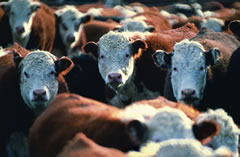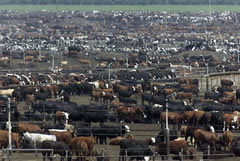Can You Bury Your Animal In Your Backyard In San Dimas
 In 2006, the Southern San Joaquin Valley experienced a larger-than-normal number of dairy and other animal mortalities due to extreme temperatures. In response to the heat event and the intermittent operation of cardinal rendering plants in the valley, a serial of recommendations were adult and approved past CalEPA and the California Section of Nutrient and Agronomics (CDFA).
In 2006, the Southern San Joaquin Valley experienced a larger-than-normal number of dairy and other animal mortalities due to extreme temperatures. In response to the heat event and the intermittent operation of cardinal rendering plants in the valley, a serial of recommendations were adult and approved past CalEPA and the California Section of Nutrient and Agronomics (CDFA).
The following summary of the Emergency Beast Disposal Guidance prescribes the following hierarchical ready of fauna mortality management practices:
Temporary Storage of Carcasses for Transport to Rendering – This is the preferred means of animal disposal offering a relatively prophylactic and integrated system that complies with the fundamental requirements of ecology quality and disease control.
Disposal at Permitted Landfills – If rendering capacity is exceeded or suspended, permitted landfilling offers the next best environmental solution to the disposal of carcasses. One local facility that may have mortalities is the Kettleman Hills landfill. Delight contact the Kettleman Hills facility at (559) 386-9711 to make arrangements for ship of carcasses. (No self-haul to Kettleman is permitted.)
On-Site Composting – If the condition of the carcasses precludes transportation to the landfill or the cost of transportation and disposal is prohibitive, on-site composting offers the side by side best solution. This alternative applies just to composting of animals that died on the owner's holding and that will be composted on the same property (no off-site transportation). Effective composting requires technical expertise, the right equipment and proper use of materials and methods. On-site composting should only be attempted if the operator has the know-how, space, supplementary carbon sources, cover fabric and on-site use for the final product. Additionally, the final production from the composting must not be transported off site.
On-Site Burial – This is the least desirable and environmentally safe culling. This culling applies only to on-site burial of animals that died on the owner'south property and that will exist buried on the same property (no off-site transportation). On-site disposal should merely be attempted after consideration of proximity to ground and surface water including domestic wells, drinking h2o reservoirs, and surface waters. Bury the animals in shallow trenches. The more shallow the burial, the less concentration of wet that can percolate to groundwater. Do not bury the animals within 100 feet of a well. Also, whatever trench should provide at least five anxiety between the bottom and groundwater. Bury mature bovine animals no more than two deep, lime the carcasses, and and then encompass with 3 feet of soil. Do not irrigate over the disposal pits. Water added to the location will cause fluids to migrate downwards. Tape numbers past type of animals buried (calves, heifers, cows, etc), depth of pit, depth of comprehend, and location, and go on the records in a safe identify for your apply. Unconsolidated waste buried in this affair non only poses a risk to water quality, but also tin can affect future use of your property. The location may need to be excavated in the hereafter to remedy the groundwater threat or to support foundations, etc.
Local Authorities Guidance
 This guidance was developed and approved by CalEPA and CDFA in 2004 for the management of fauna mortalities on farms and ranches nether a declared emergency (PDF). Intended for use by dairyman, ranchers, feedlot operators, poultry farms and other bars brute facilities when normal rendering services take been suspended or at that place is a annunciation of emergency (either local or country).
This guidance was developed and approved by CalEPA and CDFA in 2004 for the management of fauna mortalities on farms and ranches nether a declared emergency (PDF). Intended for use by dairyman, ranchers, feedlot operators, poultry farms and other bars brute facilities when normal rendering services take been suspended or at that place is a annunciation of emergency (either local or country).
Other Resource:
- Brute Disposal Post-obit an Emergency (CDC)
- Emergency Mortality Disposal Informational from CDFA
- For current heat problems affecting the state, visit California Office of Emergency Services's (Cal OES) Heat Preparedness site.
- Draft Guidelines for Emergency Composting of Cattle Mortalities (Iowa State University, PDF)
- Guide to Whole Animal Composting of Dairy Cattle (New Mexico State Academy Cooperative Extension Services, PDF).
- Carcass Disposal: A Comprehensive Review (Kansas State Academy, PDF)
Emergency Response and Disaster Preparedness
Source: https://calepa.ca.gov/disaster/animals/
Posted by: howletthanceseles1941.blogspot.com

0 Response to "Can You Bury Your Animal In Your Backyard In San Dimas"
Post a Comment